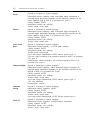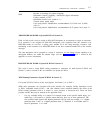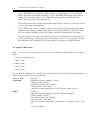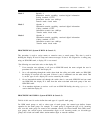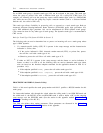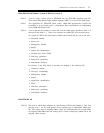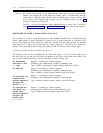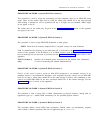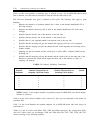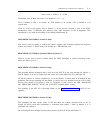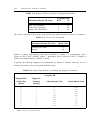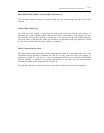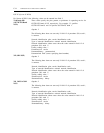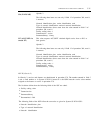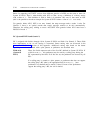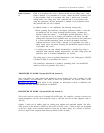
C-10
ADMINISTRATIVE PROCEDURE SUMMARY
Field 5 of this word specifies an interface type of network or user. For an ISDN-PRI point-to-point
link to function, one end must be translated as network and the other end as user.
This field also determines how glare is handled on this board. The following rules apply to glare
handling:
P
E
U
N
X
1
2
3
4
Requests the channel as a preferred channel (this is done in the channel identification IE of
the setup message)
Requests the channel exclusively (this is done in the channel identification IE of the setup
message)
Specifies that the switch’s side of the interface is the user side
Specifies that the switch’s side of the interface is the network side
Specifies that it is not important which is the network side or the user side
Specifies that the incoming call gets the channel and outgoing call waits to be negotiated
Specifies that the outgoing call gets the channel and the switch negotiates the incoming call to
another channel
Outgoing call gets the channel and the switch gives a release (REL) complete (COM) on the
incoming call
Specifies that the incoming call gets the channel and the switch waits for the other end of the
interface to respond (the switch would expect the other end of the interface to reject its
outgoing call attempt)
TABLE C-1. Internal Definition Translations
Internal
Channel Characteristic on
Channel Characteristic on
Result
Definition Outgoing Call From Switch
Incoming Call to Switch
X
P
E
1
X
E
P
2
N
P
P
2
U
P
P
1
N
E
E 3
U
E
E
4
NOTE: Generic 2 calls request channels as preferred except for ISDN-DCS calls which requests
channels as exclusive.
Field 6 of this word controls whether level-2 and level-3 tests may be performed on this board via
procedure 648.
Field 7 of this word identifies the terminal endpoint for an ISDN-PRI board (this must always be
translated as 0).
Fields 8, 9, and 10 of this word define T203, T200, and N200 respectively. By varying these fields,
the level-3 timer values can be changed. N200 and T200 affect the T303, T305, T308, and T313
timers according to the following equation:



